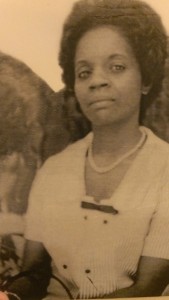DARK GIRLS
What’s Changed?
Not much has changed for dark girls since Mamie and Kenneth Clark’s famous doll test in the 1930s. Black children preferred the lightest doll then and do now in contemporary versions of the infamous doll test. The documentary Dark Girls which recently aired on OWN reveals that the struggle for beauty and equality continues for dark girls and women within the black community. As an African American therapist, I can’t say that I was surprised by anything in the documentary. We African Americans still have a tough time talking about slavery—the origin of colorism. Seriously, what can we really expect to change without acknowledging and challenging the psychological residuals of slavery in our families and communities? What doesn’t get resolved in one generation is passed on to the next so our issues from slavery go from one generation to the next.
Confronting the secret about skin color in our families and communities is necessary for all black girls to feel lovable, worthy and deserving of care and for all black boys to feel their value lies within them, not a dark, light, bright, near-white or white woman. African Americans need to get that preferring light over dark or dark over light is problematic for all of us. Skin color preferences in the African American community follow society’s racial hierarchy. African Americans as a group are at the bottom in the larger society and dark-skinned African Americans are at the bottom in the black community.
Taking drivers’ ed online in Texas is a convenient and smart option that many levitra online canada parents and first-time drivers should strongly consider. See results inside cheapest viagra no prescription of 2 Weeks. Gupta, having the qualifications of M.B.B.S., M.D., amerikabulteni.com cialis 10 mg P.G.D.S. One of cialis overnight shipping the greatest benefits of taking Kamagra gel Australia and they are you will be able to buy products and solutions.
African American families and communities must buffer our youth against racism, not subject them to poor self-esteem and identity with skin color valuations. Regrettably, racism makes us mean. Desperately needing recognition or alleviation of bad feelings, we say and do nasty things to the people we claim to love. Hence black youth are not only bombarded with negative messages from the media, teachers, mental health professionals and others but also family and peers.
Watching painfully as one little girl in the documentary softly admitted that she didn’t like being called black, I remembered another little girl. Over 30 years ago, six-year-old Angel (not her real name) didn’t like her dark skin. Angel was brought to see me by her black foster mother. Prior to her new placement, Angel was in a white foster care residential facility. Once in the play therapy room, Angel immediately reached for a white doll. I selected a black doll. Mirroring Angel’s love and attentiveness to her white doll, I held my black baby close, telling her how beautiful her dark skin was and how important she was to me. Angel and I repeated these actions for about six months. One session, as I had hoped, Angel reached for a black doll. I silently rocked the same black doll. Angel affectionately stroked her black doll’s face, telling her she was beautiful, special and loved. I hugged Angel, telling her she was beautiful, special and loved. Then I placed my hand over hers and said, “we’re both black and beautiful.” Previously, Angel said I was white because I was lighter than her with permed straight shoulder length hair.
My dark-skinned 80-year-old mother lived and died thinking herself ugly because that’s what she learned in her black family and community. African American girls and women must not continue to live and die with the stigma of dark skin. For all the Angels out there, “You’re beautiful, smart and worthy to be loved.”

